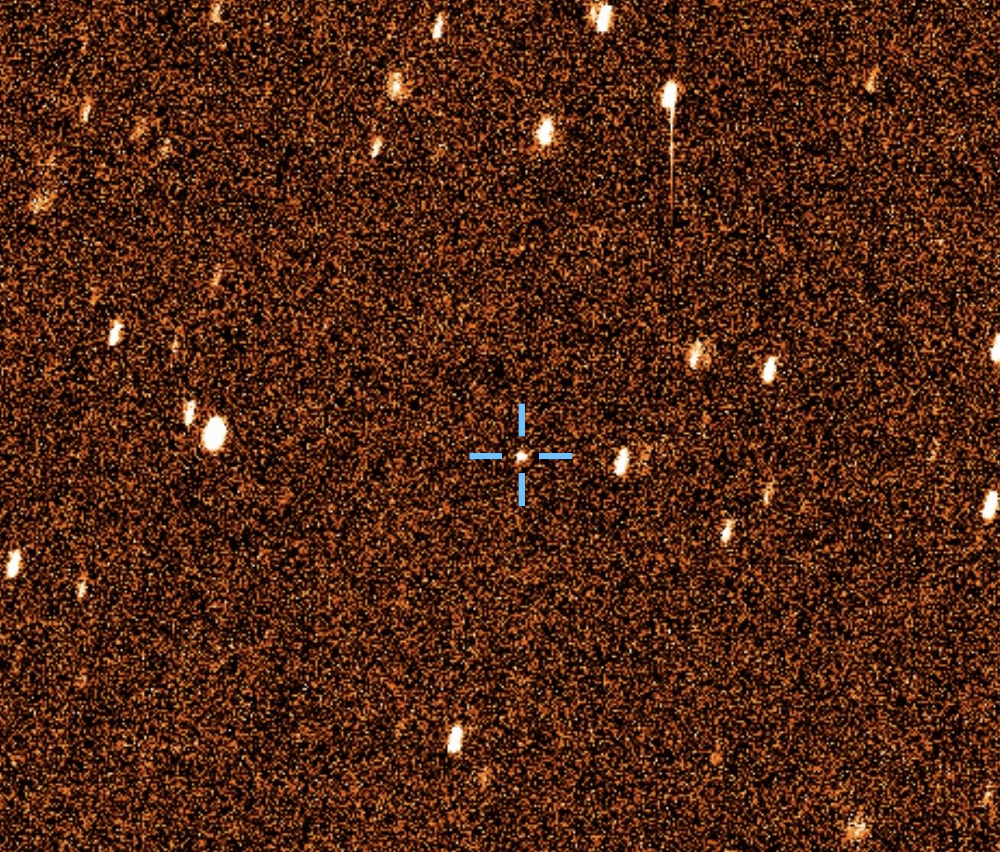
It was a bright speck in the night. On April 27, something caught the eyes of astronomers poring through data gathered by the Pan-STARRS Observatory in Hawaii: a previously unknown space rock, and one that was very, very close to Earth.
Coincidentally, the alert came as a rather large asteroid (called 1998 OR2) was making its closest approach to Earth. That space rock, which was discovered decades ago, is about 2.5 miles (4 kilometers) wide. On April 28, it flew by Earth at a range of about 3.9 million miles (6.3 million km), about 16 times the distance from Earth to the moon. That distance is pretty bland for Earth flybys; it was the asteroid's size that made the event intriguing.
The Pan-STARRS observation, it turned out, represented the opposite combination of characteristics: a small asteroid and a close shave of a flyby. The initial sighting sent planetary defense experts around the world into a flurry of activity because the first hour of observations suggested the space rock, now dubbed 2020 HS7, had a 10% chance of colliding with Earth.
Within an hour, other observatories around the world were also on the case, tracking the object. And as scientists gathered more measurements, their concerns dissipated: the object was going to pass safely by Earth. These observations also showed that the object was just 13 to 26 feet (4 to 8 meters) wide, suggesting that even if it had collided with Earth, it would simply burn up in the planet's thick atmosphere.
"Small asteroids like 2020 HS7 safely pass by Earth a few times per month," NASA's Planetary Defense Officer Lindley Johnson said in a statement released on April 28. "It poses no threat to our planet, and even if it were on a collision path with Earth it is small enough that it would be disintegrated by our Earth's atmosphere."
Still, it was an impressively close flyby: According to the European Space Agency (ESA), 2020 HS7 passed by 26,550 miles (42,735 km) away from the center of the Earth and just 750 miles (1,200 km) from the nearest satellite in geostationary orbit, one of the more distant rings of satellites surrounding Earth. The space rock passed below the satellite and left it undamaged.

According to ESA, the flyby is one of the 50 closest on record, making it rather more interesting to scientists than the much-publicized (and more distant) flyby of the larger rock 1998 OR2 the same week.
Both flybys show the way planetary defense systems are designed to work: First, identify as many asteroids as possible, starting with the largest. Then, track them long enough to plot their orbits. The more data scientists can gather, the more accurate those orbits become, hence the downgrade from 10% chance of impact to a safe miss.
If more observations instead show the impact probability increasing, alert systems are enacted to prepare areas at risk and evaluate potential mitigation approaches — but those systems weren't necessary for 2020 HS7.